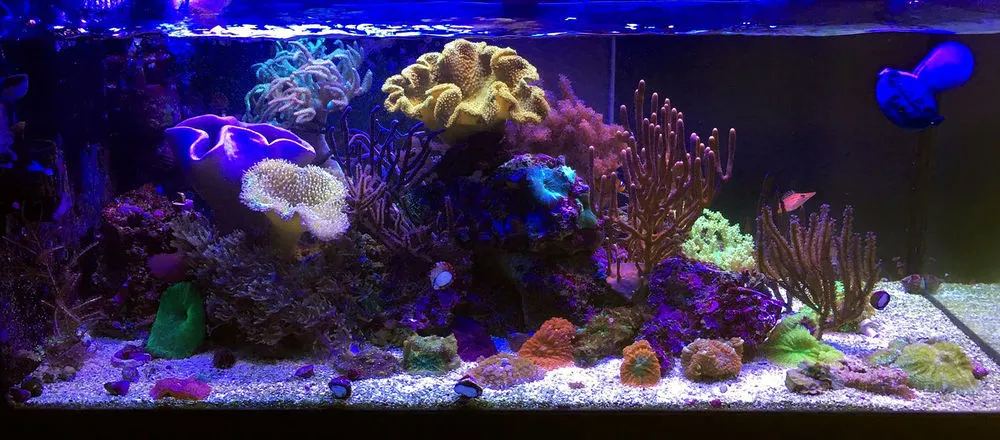Stunning 40-Gallon Reef Tank – Sharbuckle's TOTM | NanoReef

Tank Specifications
Volume: 40 Gallons / 151 Liters
Dimensions (L × W × H):
36.0" ×
18.0" ×
28.0"
91.4cm ×
45.7cm ×
71.1cm
Equipment List
No equipment information available
Frequently Asked Questions
How often should I perform water changes in a reef tank?
In the beginning, it is recommended to change about 20% of the water every two weeks. After about six months, you can reduce this to 10% every six weeks, depending on your tank’s needs.
What equipment should I use for filtration and skimming?
For filtration, utilize a sump with filter floss or media like Fluval Carbon and Aquaforest Phosphate Minus when needed. A skimmer, such as the Tunze 9004, helps to remove organic waste from the water.
How do I maintain the health of my tank's algae and corals?
To keep algae levels balanced, ensure you have a display refugium filled with macroalgae. Feeding your corals, such as gorgonians and soft corals, helps them thrive. Dosing iodide can be beneficial for soft corals like leathers and mushrooms.
What should I feed my reef tank inhabitants?
Feed your tank at least once a day, with a mixture of New Life pellets, PE mysis shrimp, frozen spirulina brine, and flake foods. You could also try making a homemade frozen blend if you have access to fresh seafood.
How can I ensure my gorgonians are well-fed?
Occasionally dosing with phytoplankton and feeding with NLS Reef Cell can enhance their growth and health. It's crucial to maintain clean conditions to avoid film algae on the gorgonians.
What steps should I take to prevent and treat pest issues like nudibranchs?
Always dip every coral or rock before adding it to your tank to prevent pests. If you encounter nudibranch issues, consider introducing natural predators or quarantining and treating affected corals.
How do I know if my corals are happy and healthy?
Look for full expansion, vibrant color, and growth. For soft corals, maintaining good water quality and occasional iodine dosing can significantly enhance their health.
How does a display refugium help a reef tank?
A display refugium increases water volume, helps keep phosphates and nitrates in check, and stabilizes pH levels. It can also house beneficial organisms like feather dusters and help reduce algae problems.
What types of macroalgae are best for a refugium?
Various types can be used, including Caulerpa Prolifera, Red Grape Caulerpa, and Dragons Breath. They not only help in nutrient export but can also serve as a habitat for small creatures.